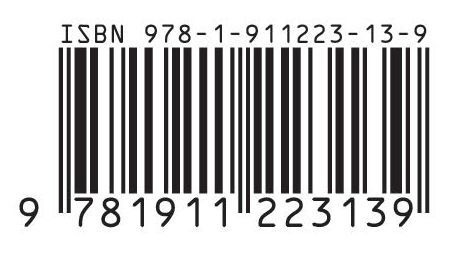#BarcodeTechnology2025
Explore tagged Tumblr posts
Text
Understanding Barcode Definitions: A Quick Guide 2025

1. What Is a Barcode? Simple Barcode Definitions Explained
In 2025, barcodes continue to play a vital role in modern business operations. To begin, let’s explore the Barcode Definitions in the simplest terms. A barcode is a visual representation of data using parallel lines (in 1D barcodes) or squares and patterns (in 2D barcodes like QR codes). This code is scanned using machines to retrieve the encoded information instantly.
The purpose of Barcode Definitions is to explain what barcodes are and how they enable businesses to streamline tracking, inventory, and point-of-sale systems. Barcodes are now used in retail, healthcare, logistics, catering, and countless other sectors.
2. How Barcodes Work: A Quick Technical Breakdown
Understanding how barcodes function helps bring clarity to Barcode Definitions. Each barcode is designed to hold specific data such as a product ID, location, batch number, or price. A scanner uses light sensors to read the code and instantly translate it into readable data for a computer system.
The scanner decodes the reflected light from the barcode and converts it into digital signals. These signals are matched with backend systems to identify the item or data linked to the code. This makes barcodes a fast and efficient solution for real-time tracking and management.
3. Common Types of Barcodes Used in 2025
When looking at Barcode Definitions, it’s important to know the various types available today:
1D Barcodes (like UPC or EAN): These are linear and used mainly in retail.
2D Barcodes (like QR Codes and Data Matrix): These carry more data in less space.
PDF417: Used in official documents like driving licenses or airline boarding passes.
GS1 Barcodes: Global standards for supply chains and retail.
Each of these fits under the umbrella of modern Barcode Definitions and helps businesses choose the best format for their needs.
4. Importance of Barcodes in Retail, Logistics, and Healthcare
Barcodes play a huge role in various industries. The Barcode Definitions used in retail involve product labeling, price management, and automated checkout systems. In logistics, barcodes help in tracking goods from warehouse to delivery. In healthcare, patient IDs, medication labels, and equipment tags rely on barcodes for accuracy and safety.
These definitions reflect the growing demand for error-free, data-driven systems that barcodes continue to fulfill in 2025.
5. Barcode Definitions in Inventory Management Systems
One of the key applications of Barcode Definitions is in inventory control. Businesses use barcodes to keep accurate track of stock levels, shipments, and usage trends. Barcode systems eliminate manual entry and reduce errors significantly.
For example, catering businesses like Jaffer Bhai’s use barcodes to track ingredient usage, kitchen supplies, and packaging materials. Each item can be tagged, scanned, and updated in real-time, helping with order accuracy and planning.
6. Advantages of Using Barcodes in Modern Business Operations
There are many advantages associated with Barcode Definitions in daily business use:
Speed: Scan hundreds of items in minutes.
Accuracy: Reduce human errors in data entry.
Cost-effective: Affordable to print and implement.
Scalability: Suitable for businesses of all sizes.
These benefits show why Barcode Definitions are essential for businesses that value efficiency and precision in 2025.
7. Barcode vs QR Code: What's the Difference in 2025?
Many people confuse barcodes with QR codes, so understanding their differences is part of clear Barcode Definitions. A barcode (1D) holds limited information and requires line-of-sight scanning. A QR code (2D) can hold more data and can be scanned from any angle, even with mobile phones.
In catering, barcodes might be used to label utensils, while QR codes can direct customers to digital menus or feedback forms. Knowing when to use each format helps businesses make the most of their barcoding systems.
8. Smart Packaging and Barcode Innovation Trends for 2025
Barcode Definitions have evolved with the rise of smart packaging. In 2025, businesses use barcodes combined with cloud systems and mobile apps to manage inventory automatically. Products can be tracked from production to customer delivery using advanced barcode systems.
Smart labels also include features like temperature tracking, expiry alerts, and tamper evidence, making barcode solutions smarter and more secure than ever.
9. How to Implement a Barcode System for Your Business
Implementing barcode systems starts with understanding Barcode Definitions and identifying your tracking needs. Here are basic steps:
Choose the right barcode type for your industry.
Invest in barcode software and printers.
Label all inventory or equipment clearly.
Train staff on how to scan and manage barcoded items.
Connect scanning data to your inventory or POS software.
Once set up, barcodes will begin improving accuracy and accountability immediately.
10. The Future of Barcode Technology: What's Next Beyond 2025?
The Barcode Definitions of the future include integration with AI, IoT (Internet of Things), and blockchain. These technologies will help verify the origin of goods, automate reordering, and improve transparency in the supply chain.
Barcodes will also evolve in design, using invisible ink or nano printing for added security. Mobile apps will continue making barcode scanning easier for businesses and consumers alike.
Call to Action:
Want to implement barcode tracking in your business? Contact AIDC Technologies India today to discover cutting-edge solutions built on reliable Barcode Definitions and smart automation.
#BarcodeDefinitions#BarcodeTechnology2025#SmartInventory#RetailAutomation#BarcodeSystem#InventorySolutions#AIDCIndia
0 notes